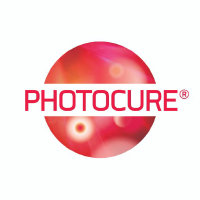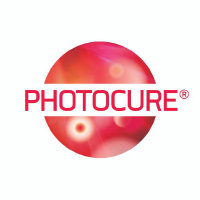
Photocure ASA
OSE:PHO


| US |

|
Johnson & Johnson
NYSE:JNJ
|
Pharmaceuticals
|
| US |

|
Berkshire Hathaway Inc
NYSE:BRK.A
|
Financial Services
|
| US |

|
Bank of America Corp
NYSE:BAC
|
Banking
|
| US |

|
Mastercard Inc
NYSE:MA
|
Technology
|
| US |

|
UnitedHealth Group Inc
NYSE:UNH
|
Health Care
|
| US |

|
Exxon Mobil Corp
NYSE:XOM
|
Energy
|
| US |

|
Pfizer Inc
NYSE:PFE
|
Pharmaceuticals
|
| US |

|
Palantir Technologies Inc
NYSE:PLTR
|
Technology
|
| US |

|
Nike Inc
NYSE:NKE
|
Textiles, Apparel & Luxury Goods
|
| US |

|
Visa Inc
NYSE:V
|
Technology
|
| CN |

|
Alibaba Group Holding Ltd
NYSE:BABA
|
Retail
|
| US |

|
JPMorgan Chase & Co
NYSE:JPM
|
Banking
|
| US |

|
Coca-Cola Co
NYSE:KO
|
Beverages
|
| US |

|
Walmart Inc
NYSE:WMT
|
Retail
|
| US |

|
Verizon Communications Inc
NYSE:VZ
|
Telecommunication
|
| US |

|
Chevron Corp
NYSE:CVX
|
Energy
|
Utilize notes to systematically review your investment decisions. By reflecting on past outcomes, you can discern effective strategies and identify those that underperformed. This continuous feedback loop enables you to adapt and refine your approach, optimizing for future success.
Each note serves as a learning point, offering insights into your decision-making processes. Over time, you'll accumulate a personalized database of knowledge, enhancing your ability to make informed decisions quickly and effectively.
With a comprehensive record of your investment history at your fingertips, you can compare current opportunities against past experiences. This not only bolsters your confidence but also ensures that each decision is grounded in a well-documented rationale.
Do you really want to delete this note?
This action cannot be undone.

| 52 Week Range |
48.4
68.4
|
| Price Target |
|
We'll email you a reminder when the closing price reaches NOK.
Choose the stock you wish to monitor with a price alert.

|
Johnson & Johnson
NYSE:JNJ
|
US |

|
Berkshire Hathaway Inc
NYSE:BRK.A
|
US |

|
Bank of America Corp
NYSE:BAC
|
US |

|
Mastercard Inc
NYSE:MA
|
US |

|
UnitedHealth Group Inc
NYSE:UNH
|
US |

|
Exxon Mobil Corp
NYSE:XOM
|
US |

|
Pfizer Inc
NYSE:PFE
|
US |

|
Palantir Technologies Inc
NYSE:PLTR
|
US |

|
Nike Inc
NYSE:NKE
|
US |

|
Visa Inc
NYSE:V
|
US |

|
Alibaba Group Holding Ltd
NYSE:BABA
|
CN |

|
JPMorgan Chase & Co
NYSE:JPM
|
US |

|
Coca-Cola Co
NYSE:KO
|
US |

|
Walmart Inc
NYSE:WMT
|
US |

|
Verizon Communications Inc
NYSE:VZ
|
US |

|
Chevron Corp
NYSE:CVX
|
US |
This alert will be permanently deleted.
Photocure ASA
Photocure ASA delivers transformative solutions to improve the lives of bladder cancer patients. The company is headquartered in Oslo, Oslo. The company went IPO on 2000-05-29. The company operates in the field of photodynamic diagnosis, cosmetics and treatment of acne, bladder cancer, colon cancer, as well as human papilloma virus (HPV) and precancerous lesions of the cervix. The Company’s activities comprise research, development and commercialization of pipeline projects within two segments: Cancer and Dermatology. Its brand portfolio includes: Hexvix and Cysview, for detection and management of bladder cancer; Visonac, for acne treatment; Cevira, used in HPV and precancerous lesions of the cervix treatment; and Lumacan, applied in colorectal cancer treatment. Furthermore, It owns a Photocure Technology platform, which develops photodynamic technology for diagnosis and therapy. The firm is a parent of a wholly owned entity, Photocure Inc.

Photocure ASA delivers transformative solutions to improve the lives of bladder cancer patients. The company is headquartered in Oslo, Oslo. The company went IPO on 2000-05-29. The company operates in the field of photodynamic diagnosis, cosmetics and treatment of acne, bladder cancer, colon cancer, as well as human papilloma virus (HPV) and precancerous lesions of the cervix. The Company’s activities comprise research, development and commercialization of pipeline projects within two segments: Cancer and Dermatology. Its brand portfolio includes: Hexvix and Cysview, for detection and management of bladder cancer; Visonac, for acne treatment; Cevira, used in HPV and precancerous lesions of the cervix treatment; and Lumacan, applied in colorectal cancer treatment. Furthermore, It owns a Photocure Technology platform, which develops photodynamic technology for diagnosis and therapy. The firm is a parent of a wholly owned entity, Photocure Inc.
This earnings call has not been analyzed yet.
If you’d like us to analyze this earnings call, click the "Request Earnings Call Analysis" button below.

































